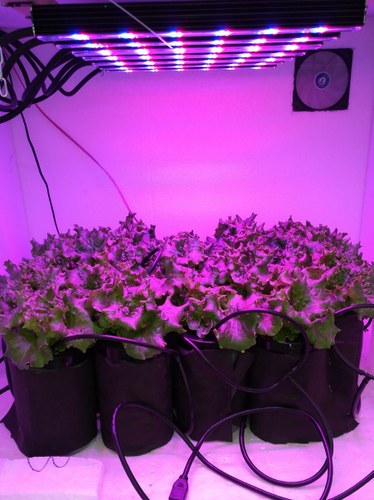Case study of technological innovations: LED lighting solutions for indoor farming

Location: Bologna, Italy
Typology: Indoor farming – LED lighting
Urban area: Inner city – Building-integrated
Innovation type: Technological innovation
Main functions: Experimental research – Education and training – Resource-efficient food production
Users: Researchers – Companies – Students – Citizens
The LED farming experiments at the Department of Agricultural and Food Sciences of the University of Bologna, in collaboration with the company FLYTECH, look for optimizing the design of indoor farms by employing this technology. Different types of light technologies, spectra and crops are tested in this indoor farm lab. Productivity, nutritional quality of grown products, resources use efficiency are evaluated.
Crops: Lettuce
Techniques: Floating hydroponic in individual plots with artificial LED lighting
Irrigation: Only initial irrigation is provided
Use of renewable resources: –
Sustainable practices: Resource efficiency – High crop density
Pennisi et al. (2017). Different Red:Blue ratios in LED lighting affect productivity, nutritional and physiological parameters of indoor idroponically grown lettuce. Book of Abstracts International Symposium on Greener Cities for more efficient ecosystem services in a climate changing world, Bologna 12-15 September 2017, p. 119.
Pennisi, G., Sanyé-Mengual, E., Orsini, F., Crepaldi, A., Nicola, S., Ochoa, J., ... & Gianquinto, G. (2019). Modelling Environmental Burdens of Indoor-Grown Vegetables and Herbs as Affected by Red and Blue LED Lighting. Sustainability, 11(15), 4063.